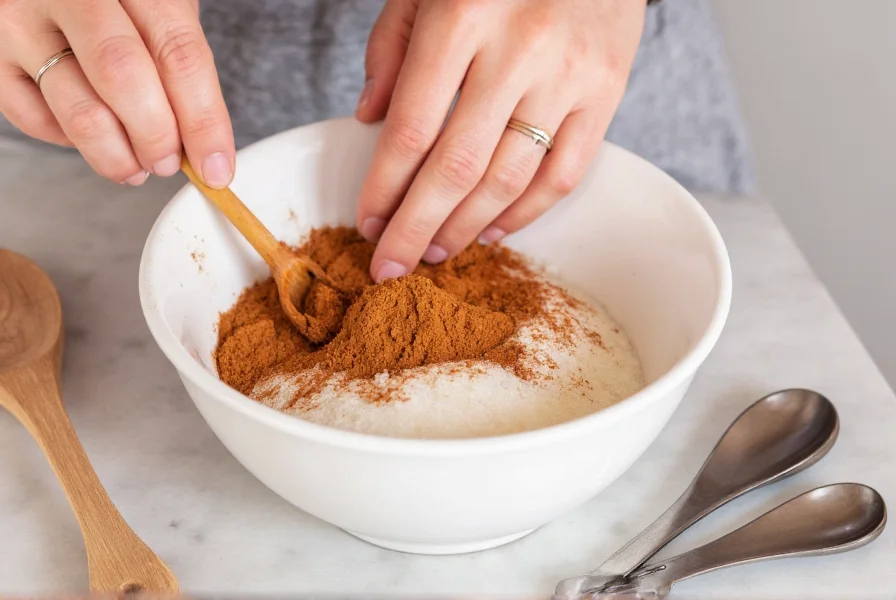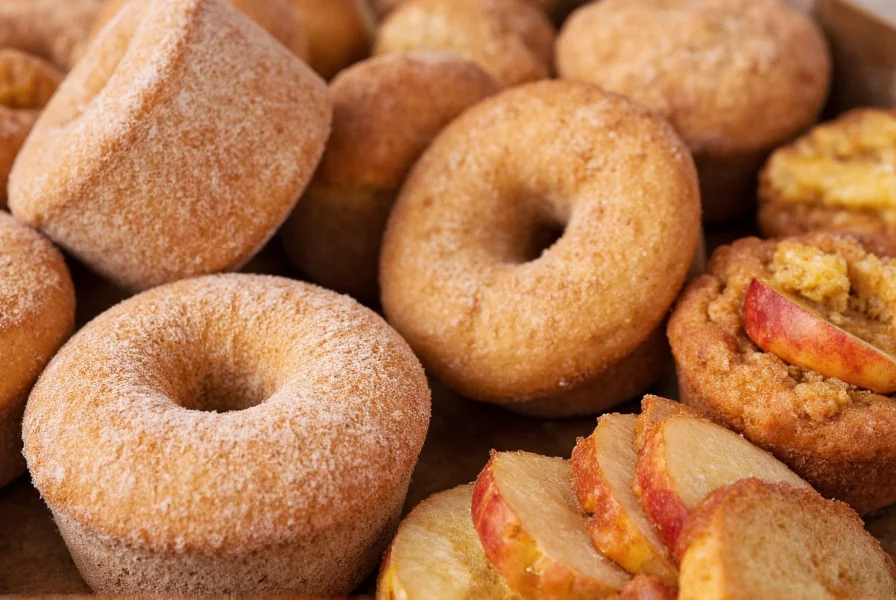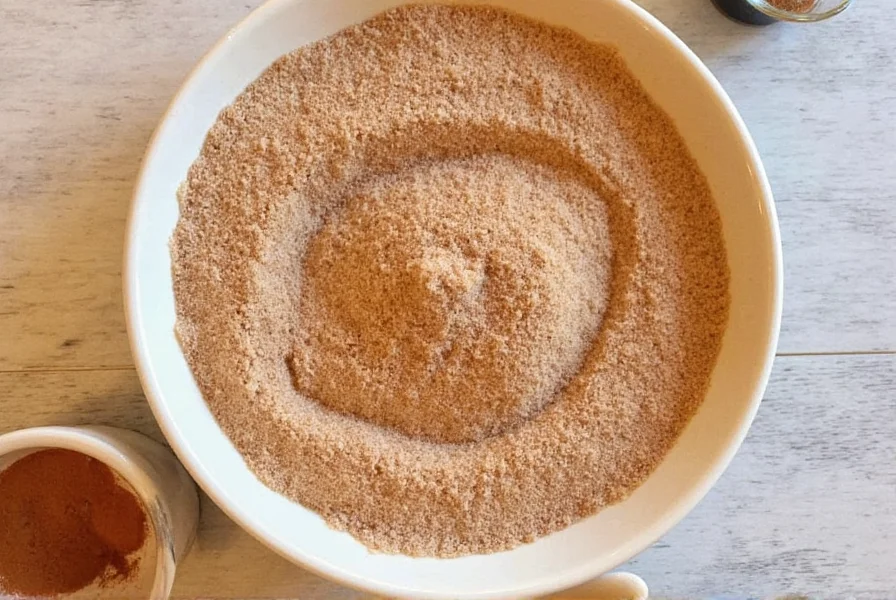The Essential Cinnamon Sugar Recipe
Creating the perfect cinnamon sugar blend requires just two pantry staples and 2 minutes of effort. This versatile mixture elevates everything from toast and coffee to baked goods and fruit. While the concept seems straightforward, proper ratios and technique make a significant difference in flavor balance and texture.
What You'll Need
For a standard batch that fills a 4-ounce jar:
- 4 tablespoons (1/4 cup) granulated white sugar
- 1 tablespoon ground cinnamon (Ceylon or Cassia)
| Batch Size | Sugar | Cinnamon | Yield |
|---|---|---|---|
| Small (sample) | 2 tsp | 1/2 tsp | Enough for 1 pastry |
| Standard | 1/4 cup | 1 tbsp | 4 oz jar |
| Large (baking) | 1 cup | 1/4 cup | 12 oz container |
Step-by-Step Preparation
- Measure precisely - Use proper measuring spoons (not silverware) for accuracy
- Sift both ingredients into a small mixing bowl to prevent clumping
- Whisk thoroughly for 30-60 seconds until completely uniform in color
- Test flavor by dipping a clean finger - adjust if needed (add sugar if too spicy)
- Transfer to an airtight container immediately after mixing

Pro Tips for Best Results
The quality of your cinnamon significantly impacts the final product. Ceylon cinnamon ("true cinnamon") offers a delicate, complex flavor ideal for delicate pastries, while Cassia cinnamon provides a stronger, more familiar spice profile perfect for coffee and robust baking. Always use fresh cinnamon—stale spice loses its volatile oils and becomes dusty and bitter.
For an ultra-fine texture ideal for dusting, process the mixture in a spice grinder for 10 seconds after initial blending. This professional technique creates a powder fine enough for even distribution on delicate items like churros or cappuccino foam.
Storage Guidelines
Store your homemade cinnamon sugar in an airtight container away from light and heat. A dark cupboard maintains potency longer than clear containers on countertops. Properly stored:
- Room temperature: 6 months
- Refrigerated: 8 months
- Freezer: 12+ months (prevents clumping in humid climates)
Never store near the stove or oven—heat accelerates flavor degradation. If clumping occurs, add 1-2 grains of uncooked rice to the container to absorb moisture.
Popular Uses Beyond the Basics
While cinnamon sugar shines on toast and pastries, creative applications include:
- Coffee enhancement - Add 1/4 tsp to your coffee grounds before brewing
- Fruit dip - Mix with Greek yogurt for apple slices
- Meat rub - Combine with smoked paprika for pork tenderloin
- Cocktail rim - Moisten glass edge with lime, then dip in cinnamon sugar
- Homemade Pop-Tarts - Sprinkle between dough layers before baking

Variations to Try
Customize your blend with these professional variations:
- Vanilla-infused - Add 1/4 tsp vanilla extract to sugar before mixing
- Citrus twist - Incorporate 1 tsp finely grated orange zest
- Spiced version - Add pinch of nutmeg and allspice for holiday baking
- Low-sugar option - Substitute 50% with erythritol for reduced sweetness
Troubleshooting Common Issues
Problem: Mixture appears clumpy
Solution: Sift ingredients separately before combining, or freeze cinnamon for 10 minutes to reduce moisture content
Problem: Flavor too intense
Solution: Increase sugar ratio to 5:1 and remix thoroughly
Problem: Color uneven
Solution: Whisk longer (90 seconds) or use a small spice grinder for final blend
Frequently Asked Questions
Can I use brown sugar instead of white sugar for cinnamon sugar?
Yes, but with important considerations. Brown sugar creates a moister blend that clumps more easily and has a caramel-like flavor profile. For best results, use 1:3 ratio (1 part cinnamon to 3 parts brown sugar) and add 1 teaspoon cornstarch to prevent clumping. This variation works particularly well for apple desserts but isn't ideal for dusting applications.
Why does my homemade cinnamon sugar taste bitter?
Bitterness typically indicates stale cinnamon. Ground cinnamon loses potency within 6 months of opening. For optimal flavor, replace your cinnamon supply every 4-6 months and store in the freezer. Always check the "best by" date on your cinnamon container - expired spice develops bitter compounds as its essential oils degrade.
What's the difference between Ceylon and Cassia cinnamon for this recipe?
Ceylon cinnamon ("true cinnamon") has a delicate, citrusy flavor ideal for subtle applications like custards and light pastries. Cassia cinnamon (common grocery store variety) delivers a stronger, spicier punch perfect for coffee, donuts, and robust baking. For most home applications, Cassia works well, but Ceylon provides superior complexity for discerning palates. Never substitute Chinese cassia for Ceylon in recipes specifying "true cinnamon" due to coumarin content differences.
How can I make cinnamon sugar stick to foods like churros?
For optimal adherence, toss warm items (120-140°F) in cinnamon sugar immediately after cooking. The slight moisture creates surface tension for the mixture to cling. For baked goods, brush with simple syrup (1:1 sugar:water) before applying cinnamon sugar. Never apply to cold surfaces—the mixture will simply fall off. Professional kitchens often use a 90% sugar / 10% cornstarch base for better adhesion properties.
Can I make a sugar-free cinnamon blend?
Yes, but the texture and behavior differ significantly. Combine 3 parts erythritol or allulose with 1 part cinnamon for similar sweetness without sugar. Add 1/2 teaspoon xanthan gum per cup to improve texture and adhesion. Note that sugar-free versions won't caramelize when heated and may have a cooling aftertaste depending on the sweetener used. For coffee applications, monk fruit blend works best with minimal flavor interference.











 浙公网安备
33010002000092号
浙公网安备
33010002000092号 浙B2-20120091-4
浙B2-20120091-4